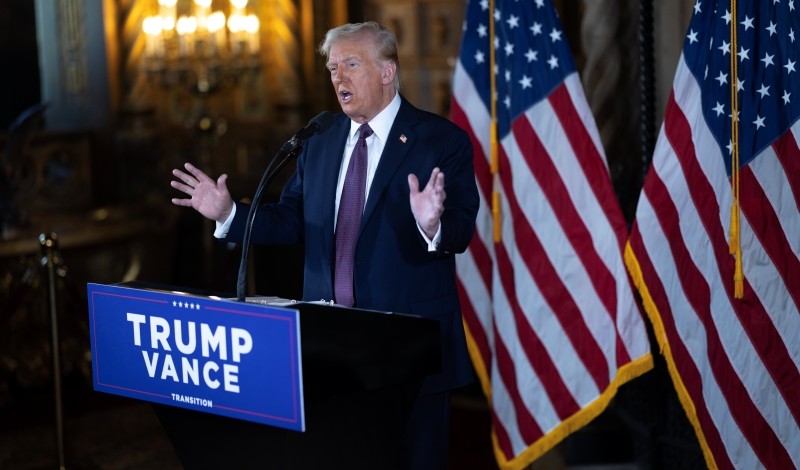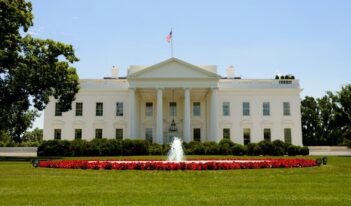
The incoming Trump Administration again promises massive deregulation, but it remains to be seen how much can realistically be rolled back.
President Donald J. Trump and his supporters have repeatedly claimed that a hallmark of his first term was an unprecedented rollback in regulations. That first Trump Administration’s deregulatory effort had been both symbolized by and institutionalized with Executive Order 13,771, which established a one-in-two-out policy calling upon federal agencies to identify at least two existing regulations to be repealed for every new one introduced. In his first term, President Trump asserted that, under this policy, his Administration saw a “record number of regulations eliminated.” More recently, as a candidate and President-elect, Trump has stated that his first Administration “approved more regulation cuts than any president in history times five.”
But the claims President Trump has made about how his first Administration reduced the pages of regulations, achieved a high ratio of deregulatory to regulatory actions, and performed in comparison with past administrations have all been greatly exaggerated or are downright false or misleading. With President Trump making similar projections about what he intends to accomplish in his second term, it is natural to ask whether the same will hold true over the next four years. The answer will depend on how “Trump 2.0” differs from and is similar to “Trump 1.0.”
When it comes to Trump 1.0’s having cut the pages of federal regulations, President Trump has claimed that his first Administration “removed nearly 25,000 pages of job-destroying regulations—more than any other President by far in the history of our country, whether it was four years, eight years, or, in one case, more than eight years.” But when looking at the number of pages in the Code of Federal Regulations—the authoritative source of operative, binding federal rules—no such reduction appears. Admittedly, the historically increasing trend in pages did slow during the Trump Administration, but rather than cutting the Code by 25,000 pages, the Administration increased it by about 1,500 pages.
Similarly, the Administration’s claim of an unprecedented ratio of deregulatory actions to new regulatory ones was off base with reality. Trump officials sometimes claimed as many as 22 deregulatory actions to each new regulatory one—with assertions of other ratios ranging from seven to one to around 10 to one. Put aside for a moment whether it makes much sense to use overall ratios of the number of rules eliminated-to-added, because eliminating even 10 Peter Rabbit-equivalent rules from the books cannot truly equate with imposing a single War and Peace-equivalent rule. But when one looks at the government’s comprehensive Unified Regulatory Agenda over the course of the Trump 1.0 years, and compares the overall number of final regulatory actions to the number of final actions the Administration classified as deregulatory, the ratio actually turned out to be about three to one. That is, the Administration took three regulatory actions for every deregulatory one.
If one compares only economically or otherwise significant regulatory actions with similarly significant deregulatory actions, the ratio turned out to be two to one. Again, the Administration took more regulatory actions than deregulatory ones.
These data are all drawn from the standard sources published by the Trump Administration itself, and they are examined in further detail in a co-authored report that I released toward the conclusion of the first Trump term. In that report, my coauthors and I also looked at the historical record, because President Trump has frequently claimed that his Administration accomplished more by way of deregulation than any of its predecessors. “We got you the biggest regulation cuts,” he said in his infamous speech at the Ellipse on January 6, 2021. “There’s no President, whether it’s four years, eight years, or in one case more, got anywhere near the regulation cuts.”
But is this so?
Other presidents have pursued deregulatory efforts. As recent remembrances of President Jimmy Carter have noted, the nation took exceptionally consequential steps under his watch to deregulate major sectors of the economy, including airlines, trucking, railroads, and telecommunications. President Carter also instituted a White House process for reviewing new regulations, an effort that President Ronald Reagan built upon by establishing a formal review process for major regulatory proposals under Executive Order 12,291. President Bill Clinton updated the Reagan order with one of his own—Executive Order 12,866—and it has continued to govern White House review of regulations ever since.
The Clinton Administration also undertook a widescale reconsideration of existing regulations as part of his National Performance Review, cleaning pages of old rules out of the Code of Federal Regulations. President Barack Obama presided over a “retrospective review” process that also eliminated outdated rules.
Needless to say, the first Trump Administration was hardly alone in emphasizing deregulation. And no President since Carter can claim to have done as much by way of substantial deregulation of the U.S. economy—perhaps in part because so much of the nation’s most significant economic regulation had been removed by Carter’s deregulation.
If one looks further at the annual average number of new economically significant rules adopted in the first Trump Administration and compares them with the number of such rules in the first four years of other administrations, the count during the initial Trump term is the highest of any. The Trump Administration issued 62 such regulations, compared with 56 during President Barack Obama’s first term and 45 each for the first terms of Presidents Clinton and George W. Bush. Only the average across the entire eight years of the Obama Administration rivaled the Trump Administration on this count, with a tie of 62 economically significant regulations per year.
It is plain that President Trump’s claimed comparisons to past administrations, such as his claims about the number and pages of regulations removed, fail to withstand scrutiny. This raises an important question: Why did the first Trump Administration’s deregulatory record fall so short of its lofty claims?
It is true that taking rules off the books demands more than just the cast of a wand or stroke of a pen. The Administrative Procedure Act requires agencies to adhere to the same notice-and-comment procedures when it removes a rule from the books as when it adds one. The formal legal standard for judicial review of the recission of a rule is also the same as for the adoption of a rule. And practically and politically speaking, deregulation can pose additional challenges not present with the imposition of new rules. It is often not as easy for an agency to justify eliminating a rule in the face of all the countervailing factual evidence that the same agency had previously put forward to justify the rule in the first place. Agencies that seek to remove rules can expect to receive, and have to grapple with, public comments that will likely raise many of the same arguments that the agency previously put forward when it adopted the rule.
Moreover, many, if not most, rules are mandated by statute, so unless Congress amends these statutes, the rules cannot be eliminated. When President Trump boldly proclaimed at a press event early in his first term that his Administration would bring the number of regulations down to what they were in the 1960s, his chief regulatory advisor later came out to speak to the press and tamped down the claim. “You’d also have to have a lot of statutory reform,” she noted, “because the growth from 1960 to today is largely based on a number of statutes that have required a lot of regulation.”
All this said, might we still expect the second Trump Administration to accomplish more by way of deregulation than the first? Perhaps. This question turns on both the continuities and the changes that will shape a second term.
Several factors will be different in the second Trump Administration than in the first. Going into his second term, President Trump and his advisors have the benefit of the experience they gained during the first Administration—plus the benefit of having the last four years to plan strategy for the second. Although the first Administration was slow out of the starting gate, the second one appears to have a more active and ready transition team and strategic plan. This second Administration will also be able to pull off the shelf its prior executive orders and guidances, gaining earlier momentum to implement changes and avoiding some of the delays that slowed efforts during the first term.
The second Trump Administration also has openly enlisted outside assistance from private sector leaders. The so-called Department of Government Efficiency under the direction of Elon Musk is building both a staff team and network of executives to look for opportunities to reduce regulations and make other changes to government administration. In addition, the early adoption of Schedule F—which eliminates civil service protections for potentially thousands of government officials—could potentially provide some assistance in accomplishing the President’s deregulatory ambitions.
The legal landscape is also different today than when President Trump first took office in 2017. A series of recent Supreme Court decisions have disrupted settled understandings of regulatory agencies’ authority. In the 2024 case of Loper Bright Enterprises v. Raimondo, the Supreme Court overturned the Chevron doctrine, which instructed courts to defer to agencies’ reasonable interpretations of ambiguous statutory provisions. And in the 2022 case of West Virginia v. EPA, the Supreme Court established a major questions doctrine under which courts must find great clarity in agencies’ statutory authority before blessing regulatory actions that courts perceive to have “vast economic and political significance.”
These decisions—and the skepticism toward regulation that they represent—may make a second Trump Administration more emboldened to think bigger about deregulation. It seems plausible that the Supreme Court will ultimately treat major deregulatory efforts in the second Trump Administration more deferentially compared with how it has treated major regulatory efforts.
All this said, factors that likely accounted for the less-than-dramatic deregulatory outcomes during President Trump’s first term appear likely to remain the same.
President Trump’s management and leadership style in a second term seems unlikely to deviate from the patterns observed during his first term. He has shown limited interest in the complexities of regulatory policy. His leadership is marked by a preference for bold proclamations over detailed policy engagement, often prioritizing immediate symbolic victories over sustained, methodical implementation. He can frequently shift focus from one issue to another, which can make it harder to sustain strategic momentum.
In addition, throughout President Trump’s first term, internal conflicts seemed to arise to a degree and with a frequency that was greater than in other presidencies. So far, there seems to be little indication that the second Trump Administration will be free from similar in-fighting. Recent public disputes among prominent Trump-aligned figures—for example, the open squabbling over H-1B visa allotments between Elon Musk and Laura Loomer—may signal deeper divisions that could hamper efforts to achieve a sustained deregulatory agenda.
More importantly, laws still remain on the books that will impede efforts to achieve substantial regulatory rollbacks. The Administrative Procedure Act’s requirements still govern efforts to remove regulations from the books, imposing the same legal requirements for notice, public comment, and reasoned justification. And most important of all, Congress’s substantive requirements for regulations remain in place, too.
Admittedly, Republicans control both houses of Congress—as they did at the beginning of the first Trump Administration. As such, they can be expected to revoke a modest number of very recent Biden-era rules under the Congressional Review Act’s procedures. Beyond that, more systemic and substantial legislative reform remains highly uncertain. The close margins in both legislative chambers, combined with the Senate filibuster for most substantive legislation, will make sweeping legislative changes difficult. The recent experiences of House Republicans needing Democratic support to pass key budgetary legislation underscores the fragility of their majority. The initial holdout of a small number of Republican representatives in the House’s vote on Representative Mike Johnson (R-La.) as their speaker only confirms internal party divisions that will complicate efforts to achieve significant policy change through Congress.
How these various factors play out remains to be seen. It does seem certain that a second Trump Administration will differ in important ways from the first, especially when it comes to deregulation. That said, the full extent of the difference remains uncertain. A key question will be whether the rhetoric surrounding deregulation will align more closely with reality in the second term. Will the gap between claims and outcomes persist, and, if so, how large it will be?
In President Trump’s first term, his Administration’s deregulatory rhetoric often far exceeded its actual record, but this did not necessarily undermine its political import. What ultimately seemed to matter most to the President politically was the public perception that his Administration was dismantling regulatory barriers at historic rates. This dynamic—namely, the incentive and ability to engage in a “deregulation deception” by claiming to have achieved much more than the Administration actually delivered—will continue to prevail in the second Trump Administration.
Over the next four years, scholars, regulatory analysts, and members of the public would be well-served to approach with a healthy degree of skepticism future claims about massive regulatory rollbacks during “Trump 2.0.” The political narrative may once again diverge significantly from measurable outcomes.




